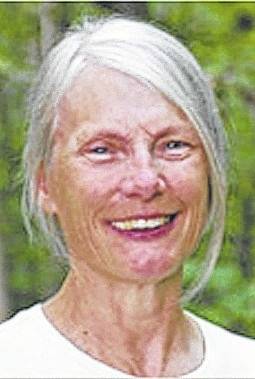
A sure sign of spring when you begin driving down the lane to Stratford Ecological Center on Liberty Road are the flowering yellow spice bushes, and further along the abundant green blades of wild leeks or ramps, and the pretty lavender spring beauties. The signs are reinforced in the Nature Preserve where the Buckeye trees have popped their reddish-colored sticky leaves and extended their white candle flowers, and on the ground the leafless bloodroot supports a beautiful white flower. It is eye candy and such a tonic! In the next month, numerous varieties of wild flowers, including the prolific white trillium and the wild blue hyacinths, will emerge before the tree canopy, and visiting school children are encouraged to seek out, admire, and become familiar with these fleeting jewels.
Our pasture fields have taken a beating as Farmer Jeff has tried to get in as much grazing as possible to supplement our hay supplies. He plans to renovate the pastures with a different grass mix called Festulolium, a mixture of meadow fescue and Italian ryegrass. He will use a spike tooth harrow to open the ground, and at the same time broadcast the seed. Then we can allow the lighter weight animals like the goats and sheep to “hoof” in the seed. The extra nutritious mix has a longer growing season and can stand wetter conditions. If it is too wet to make hay, Festulolium can be cut, baled wet, and wrapped in plastic as haylage for winter feed. As the weather patterns change, we are gearing up to make haylage. We will need to buy a different baler and have been offered the loan of a wrapper.
It will not be as easy to access the children’s garden from the east side as Farmer Jeff intends to fence off the lane beside the equipment shed, and the area between the barn yard and the woods, to let the llamas, goats, ewes and our 23 lambs graze the grass. Small hay bales arrived this past week to feed them in their pens, and we will make sure we save enough for the goats due to kid in May.
The cattle are foraging in the south pasture. They appeared well and content to lie down the morning a school group asked to go out and meet our oldest Jersey cow, Pumpkin. All the round hay bales have been fed to the cattle, which necessitated a further purchase of twelve 4-by-4 bales each weighing 600 pounds, which is enough to supplement their grass intake for another three weeks.
A lone hen has been escaping from the orchard coop and laying her eggs in the equipment shed. Fortunately, this does not happen often as we cannot risk eating such eggs of unknown age. Eleven were found on April 2! She must have been out a lot because a hen only lays one egg a day or about five every seven days. It was the day the last three pigs were leaving us for processing. As a final gesture, the eggs were fed whole to them, and the white-faced pig amused us all with egg all over his face. An in-pig sow or some piglets should be joining us before too long.
During a farm and nature school tour on April 5, the children spotted animals in a small wooden crate on the back of a pickup truck heading for the barn. They high tailed over and found Delaware dairy farmer John Van Gundy had brought three calves less than a month old to join our herd. A Hereford/Jersey heifer, whom we hope to keep for breeding to introduce a new blood line, a Hereford/Jersey bull, and a Jersey bull. They were small enough that they could be carried into the vacant pig pen, where the rest of the cattle gathered on the other side of the fence to introduce themselves.
The calves are still nursing and need feeding twice a day with a bottle. John brought some fresh milk, and this was fed 50/50 with formula to introduce them to it. Bottle feeding is no easy task and takes more than one person because the calves are forceful in their eagerness to drink. They often pull the short nipple right off the bottle, waste the milk, and create extra work to make up new bottles. It was a great relief to find and resurrect our “milk bar,” a round container we can fill with milk with five sturdy long nipples made in New Zealand. It is a one-man operation, and as the calves drink at a slower pace, their rumen has a better chance to handle the milk.
The pot holes in the lane have been filled, and a layer of gravel spread on the surface. This will prove helpful as we are expecting over 400 people to arrive next Saturday, April 27, for our annual family Llama and Sheep Shearing Day from 10 a.m. to 3 p.m. Cost is $20 per family of 4, and $5 per additional person payable on arrival. The shearers will interpret the process, and there are hands-on fiber projects for the children and opportunities to visit the barn and farm. A Wildflower Walk is set for Saturday, May 11, from 10 a.m. to noon at $5 per person, with reservations necessary. On Saturday, May 18, the Herb Group is offering their annual Edible Plant Walk ID and Lunch from 11 a.m. to 1 pm. for $20 with a reservation. Details of the above activities and others can be found on our website.
We hope to see you at any of these activities or you are welcome to visit during our working hours from 9 a.m. to 5 p.m. Monday through Friday and 9 a.m. to 1 on Saturday.


